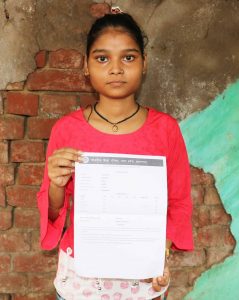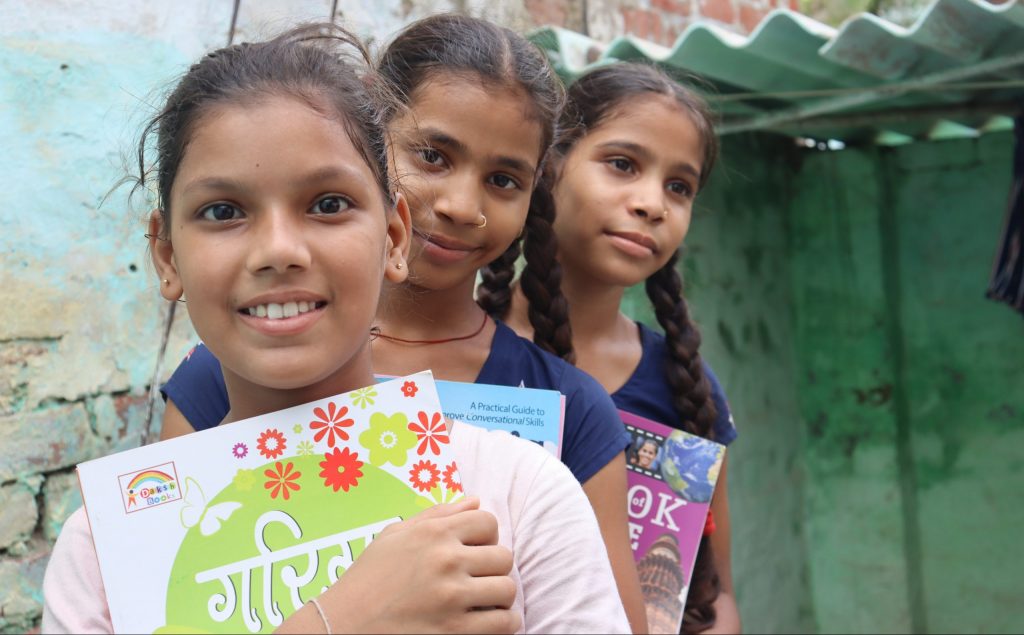
 The birth of the Indian Dreams Foundation (IDF) arose out of personal tragedy. It began its journey in 2004 when a group of like-minded people from various backgrounds decided to make a difference in the lives of those less privileged than them. The NGO’s decade-long efforts in education, health and the empowerment of the deprived girl child is hugely appreciated globally. CSR Mandate spoke to Punit Asthana, the Founder of the Indian Dreams Foundation, to know more about the NGO’s inspiring journey.
The birth of the Indian Dreams Foundation (IDF) arose out of personal tragedy. It began its journey in 2004 when a group of like-minded people from various backgrounds decided to make a difference in the lives of those less privileged than them. The NGO’s decade-long efforts in education, health and the empowerment of the deprived girl child is hugely appreciated globally. CSR Mandate spoke to Punit Asthana, the Founder of the Indian Dreams Foundation, to know more about the NGO’s inspiring journey.
What is the story behind IDF? What is the vision and mission of the NGO?
The Indian Dreams Foundation (IDF) is dedicated to educating, empowering and developing underprivileged communities by creating awareness on pressing issues such as the importance of education and health. Our journey began in 2004 when a group of like-minded individuals from various backgrounds got together to make a difference in the lives of the less privileged. Since our establishment as an NGO on January 24, 2005, we have relentlessly worked in education, health, and women empowerment in underprivileged communities. We strongly believe in the power of education as a tool of empowerment that can be leveraged to break taboos and stereotypes.
We envision an empowered society where every citizen has an equal chance of leading a happy, safe and meaningful life with access to qualitative education, healthcare and vocational skills.
Our mission is to work towards achieving at the grassroots level, eradication of illiteracy and gender discrimination in underprivileged communities by making education accessible and raising awareness for the same.
The Indian Dreams Foundation arose out of personal tragedy. I lost my father at the young age of ten. This tragic incident turned my life upside down, but with assistance and encouragement from friends, I was able to complete my education. The help I received at that crucial juncture in my life, and being able to pursue my dreams instilled a burden in me for those with no opportunity of doing so on their own. My heart was filled with compassion for the underprivileged seeking a way out of their challenging circumstances. I felt it was my duty to help provide a comprehensive education to vulnerable communities.
What are your core areas? Why focus on these areas?
Our main focus is on Education – formal and non-formal, Girls’ Education, School Development through Infrastructure and Quality Education Support, Menstrual Health and Hygiene, Sexual & Reproductive Health & Rights (SRHR) for adolescent girls and married women.
Based on the data survey and demographic conditions in the communities we are involved in, gender inequality and women’s health are serious concerns. There is an immediate call to action on girls’ health, education and empowering communities after COVID-19 and its impact on vulnerable communities. That is why we have been focusing on these issues for the past several years.
Where is your area of operations? Do you have a specific reason for choosing this area?
Our work is mostly concentrated in Agra, Uttar Pradesh. We choose to focus our work here. Uttar Pradesh is one of the poorest States in the country with the largest population, alarmingly low literacy rates, a plethora of pressing issues and limited awareness on health and hygiene practices. We initiated operations in Agra and extended to other districts like Barabanki and Raebareli to reach out to larger sections of vulnerable communities, specifically girls and women. We hope to empower them through education and make them aware of their rights.
Take us through the work you are doing in the field of Education. Why is this field very close to your heart?
Since founding the Indian Dreams Foundation, I have mentored a diverse group of multi-ethnic professionals and built effective working relationships across geographic and cultural borders to further push the agenda of education for rural communities in India. I utilise my expertise in managing corporate sustainability programmes with a focus on volunteerism and community development activities to introduce our NGO to a larger audience.
The Indian Dreams Foundation arose out of personal tragedy. I lost my father at the young age of ten. This tragic incident turned my life upside down, but with assistance and encouragement from friends, I was able to complete my education. The help I received at that crucial juncture in my life, and being able to pursue my dreams instilled a burden in me for those with no opportunity of doing so on their own. My heart was filled with compassion for the underprivileged seeking a way out of their challenging circumstances. I felt it was my duty to help provide a comprehensive education to vulnerable communities.
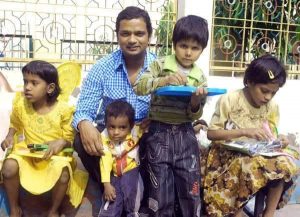
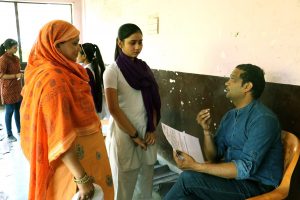
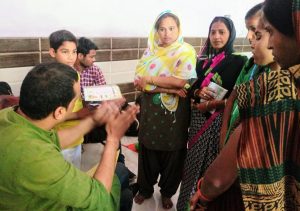
|
HEER “As a poor Muslim girl, I feel so blessed to get an opportunity to study. This is a dream come true as it is almost impossible because of social cultures and conservative mindsets.” Before joining the IDF’s Honhar Ladki programme, Heer was frightened and uncertain about her fate. Would she be blessed to complete her primary education from a government school or would her parents force her to marry like her elder siblings? Heer grew up in challenging conditions where she saw her sisters and brother leave school and get married at a tender age. Their early marriages planted a seed of determination in Heer that she needs to get her priorities in place – to complete her education and become an independent and empowered woman. After completing her primary education seven years ago, her burning desire for further education made her seek avenues to achieve it. She learned about IDF’s girls’ education sponsoring and mentoring programme. She approached the IDF team for her education support and pleaded with them to talk to her parents. The team went to meet the parents. It was a big challenge for them to counsel and try to convince her parents, especially her father, for Heer’s education because her father prefer to enrol her in a traditional Muslim education centre (Madrasa) and not in the regular school system. The team was empathetic and heard him out. The Team conducted regular meetings with Heer’s father and was able to get his nod regarding her education. Heer was very excited and she said that she would always remember the day when her life turned around and a new hope sprung in her life when she was admitted in Class VI under the IDF’s Girls’ Education Programme. IDF has since sponsored her education. Heer was ecstatic when she successfully crossed her first hurdle towards her dream when she passed her Class XII with flying colours with a 71 percentage. She became the first member of her family with a higher secondary school certificate. With tears of joy in her eyes, she thanked the Indian Dreams Foundation for the life-changing opportunity. She wants to be a government teacher. She pledged her commitment to giving back to society by providing education opportunities to girls like her once she has skilled and empower herself further. |
Honhar Ladki is an education sponsorship and mentoring programme to support adolescent girls from rural and urban slums. Besides enrolment and sponsorship, the programme takes a multi-faceted approach to ensure parental commitment, achieve gender equality and reduce girls’ drop-out rates by developing half-yearly progress reports, periodic parent-teacher meetings, organising monthly sessions where our staff talk with teachers about attendance and performance, providing mentors for the girls to help them become independent and develop self-confidence, organising awareness sessions for girls and their mothers, and educate them on health and hygiene, menstruation and nutrition.
According to you, what are the reasons for low literacy rates in rural India?
The abysmal literacy rate in rural India is due to a system of economic disparity and gender, race and caste discrimination.
In rural areas, the mindset of employing children for small jobs or taking care of siblings has persisted, meaning that they do not see merit in sending children to school.
The target set by the National Policy of Education in 1986 of investing a minimum of 6 per cent of the country’s GDP in Education has not been met (3.5 per cent of GDP has been allocated to education as per the 2021 budget), meaning that schools are largely underfunded and do not have the resources to impart an education that is valuable in the 21st century.
There is a lack of proper infrastructure. Electricity is available in only 62.81 per cent of schools across India. The average pupil to teacher ratio was 24 in 2015-16 but, there are still schools where one teacher is responsible for as many as 150 students).
The continued existence of deep-seated patriarchal norms that centre around the idea that women are exclusively homemakers and birth givers and, therefore, require no formal education as that would be a waste of time and money.
Despite reservation policies, systemic discrimination against lower castes and Dalits in educational institutions persists, resulting in a gap between the Dalit literacy rate and average literacy rate [Dalit literacy level is only at 66.1 per cent compared to the all-India level of 73 per cent. Female literacy among them is as low as 56.5 per cent against the all-India female literacy level of 64.6 per cent (Census Report, 2011)]
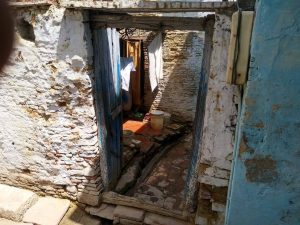

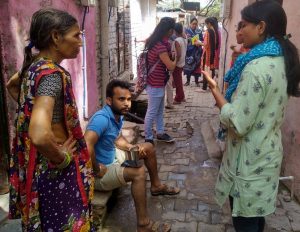
How is IDF helping to overcome these obstacles through the various education programmes?
We have direct intervention at the community level, so with decade-long operations in slums and rural pockets, we have succeeded in creating a relationship with the slum dwellers. Initially, it was challenging for us to convince and motivate parents, especially male members of the family to send their girl children to school.
Most people had an archaic mindset with a negative approach regarding the education of girl children. They were not keen to send them to school. They felt it was a waste of money. They were more inclined on getting their daughters married as early as possible. They believed that girls must stay at home and do all the work like cooking, cleaning the house and taking care of their siblings. To combat that, our team regularly counselled parents, families and communities about the importance of education for the children, no matter their gender.
After years of continuous intervention, we succeeded in helping communities develop a positive mindset towards girls’ education. We made them aware of the facilities provided by the government to empower their children.


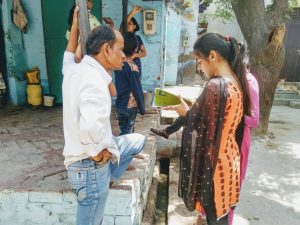
Do elaborate on your flagship initiative – Honhar Ladki. What is the selection process like for girls to be sponsored and mentored under this programme?
Honhar Ladki is an education sponsorship and mentoring programme to support adolescent girls from rural and urban slums. Besides enrolment and sponsorship, the programme takes a multi-faceted approach to ensure parental commitment, achieve gender equality and reduce girls’ drop-out rates by developing half-yearly progress reports, periodic parent-teacher meetings, organising monthly sessions where our staff talk with teachers about attendance and performance, providing mentors for the girls to help them become independent and develop self-confidence, organising awareness sessions for girls and their mothers, and educate them on health and hygiene, menstruation and nutrition.
We do follow a three-tier selection procedure to integrate these girls to be a part of this programme.
Tier 1: We conduct community mapping in communities and perform demographic surveys using primary data from sources such as the local council, Panchayat, search engines, and secondary data through questionnaires.
Tier 2: This is the stage where we shortlist the girls from the Tier 1 process. We further evaluate them against criteria like family income, academic record, number of working members in the family, etc. The shortlisted beneficiaries are then invited to fill a preliminary form.
Tier 3: We conduct an internal analysis on the girls who have been shortlisted. We then interview the parents. We evaluate the girls’ level of understanding and learning. When we are satisfied with the outcome of the evaluation, we enrol the selected girls into private or semi-governmental schools.
How do you evaluate the girls’ progress?
Our team visits the schools and engages with teachers and girls regularly. We also routinely conduct meetings with parents and teachers so that all the stakeholders are a part of the process.
The evaluation mechanism consists of:
Periodic Parent-Teacher Meetings: These are held on the 20th-25th of every month. Teachers highlight the achievements or points of improvement to the parents
School Interaction Session (SIS): This is a monthly activity whereby our staff and volunteers visit the schools where the beneficiaries study and personally meet with their teachers regarding their performance and behaviour at school
Progress Report: Every girl’s progress is monitored and evaluated half-yearly. These are some areas where progress is monitored – Academic Performance, Behavioural Changes, Participation in Extra-curricular Activities, Social Development, Health Consciousness.
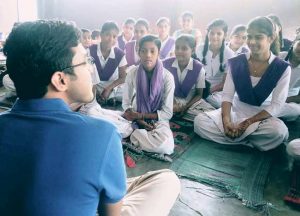

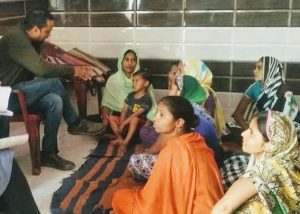
The Ready to School is a non-formal educational initiative targeting out-of-school children or girls from minority communities. Through the programme, we aim to improve the child’s confidence, social skills and academic ability to ultimately enrol in formal education. The emphasis is on making studying easy, fun and interesting while simultaneously monitoring the performance of each child using specialist tools developed by experienced educational professionals.
 How have the girls been transformed by this programme? How has it helped them achieve their potential?
How have the girls been transformed by this programme? How has it helped them achieve their potential?
The Honhar Ladki programme has allowed the girls to be exposed to a holistic education – breaking societal barriers by getting their diplomas and being introduced to different extra-curricular activities. They are taught about their sexual and reproductive 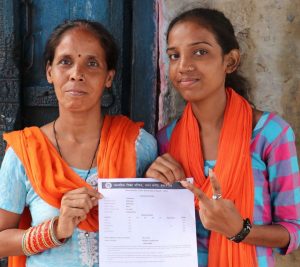 rights and are given the space to dream beyond the 12th Grade.
rights and are given the space to dream beyond the 12th Grade.
The feedback and testimonials we have gathered from our beneficiaries, teachers and parents over the years show that the programme has led to delayed marriages in the communities; has 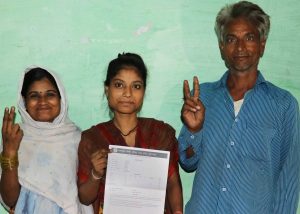 given them a clearer understanding of the value of good health and wellbeing; increased their self-confidence and self-esteem, developed their life skills; gave them a better understanding about their rights, and gave them dreams to grow as empowered women.
given them a clearer understanding of the value of good health and wellbeing; increased their self-confidence and self-esteem, developed their life skills; gave them a better understanding about their rights, and gave them dreams to grow as empowered women.
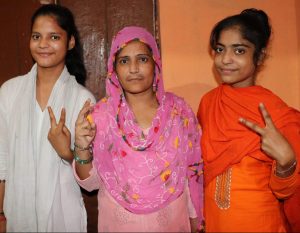 How many girls have been impacted by this programme since you first started?
How many girls have been impacted by this programme since you first started?
The Honhar Ladki programme has sponsored nearly 1000 girls as direct beneficiaries and over 3000 girls as indirect beneficiaries.
Tell us about the Ready to School programme and its impact on the communities.
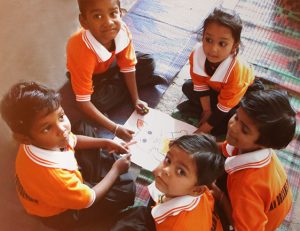 The Ready to School is a non-formal educational initiative targeting out-of-school children or girls from minority communities. Through the programme, we aim to improve the child’s confidence, social skills and academic ability to ultimately enrol in formal education. The emphasis is on making studying easy, fun and interesting while simultaneously monitoring the performance of each child
The Ready to School is a non-formal educational initiative targeting out-of-school children or girls from minority communities. Through the programme, we aim to improve the child’s confidence, social skills and academic ability to ultimately enrol in formal education. The emphasis is on making studying easy, fun and interesting while simultaneously monitoring the performance of each child 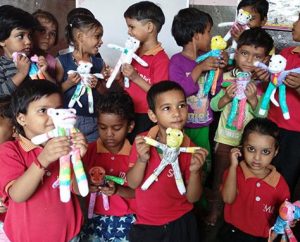 using specialist tools developed by experienced educational professionals.
using specialist tools developed by experienced educational professionals.
The Centre’s extra-curricular activities include regular community sessions to transform local attitudes to girl’s education, monthly parent-teacher meetings to discuss each child’s development, Saturday Fun Days where children learn 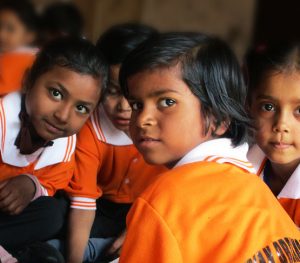 arts and crafts, singing, dance, storytelling, etc., and celebration of Wellness Days in which children can get their eye and teeth check-up.
arts and crafts, singing, dance, storytelling, etc., and celebration of Wellness Days in which children can get their eye and teeth check-up.
Since its introduction, the Ready to School programme has imparted non-formal education to over 1000 students (30 per cent of whom were school drop-outs), 80 per cent belong to Scheduled Castes, and 20 per cent are from the Muslim  community.
community.
What is the feedback from parents regarding this programme?
The Ready to School Programme is well received by parents in the communities. They come from impoverished backgrounds, and in most cases, did not have sufficient funds to educate 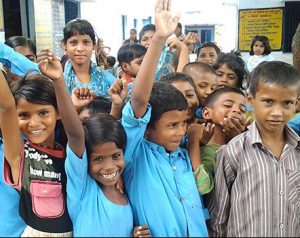 their children (hence they dropped out). This programme allows their children to have an experiential education that teaches ethics, value systems and hands-on skills that formal education may not have. Additionally, some of these communities live in extremely remote regions and do not have schools in their locality, so the programme permits children to get a non-formal education without travelling hours on end to towns that have schools.
their children (hence they dropped out). This programme allows their children to have an experiential education that teaches ethics, value systems and hands-on skills that formal education may not have. Additionally, some of these communities live in extremely remote regions and do not have schools in their locality, so the programme permits children to get a non-formal education without travelling hours on end to towns that have schools.
|
MONIKA “I lost my father a week before my 12th Board results were declared. I was torn between celebrating my achievement or grief for my father’s unexpected demise.” Monika, the daughter of a sweeper mother and a ragpicker father, secured 67 per cent marks in Class XII Board Exams this year. It was a weird twist of fate that her biggest success thus far and an unexpected tragedy took place in the same week. It was a bittersweet moment for the family as their father was not there to bask in his daughter’s success as he was excited and was looking forward to the results since Monika is the first person in the family to be able to reach such a high level of education. Monika is a focused, confident girl who always dreamt of becoming a teacher. Her family’s pitiable financial circumstances and the day-to-day challenges for survival made her hunger for change. She believed that if she did not get an education, her future would be as obscure as her parents. Her passion for education opened doors for her to be enrolled in a government primary school where her mother, Sunita, would clean the school premises. After completing her primary education, she was in a dilemma as she was unable to find a way to continue her education. She had to drop out of school for several months. There were many instances of domestic violence in the house due to her father’s dependency on alcohol. She was pained to see her father gripped by this addiction as he was a good person when not under the control of alcohol. He even had dreams of seeing his daughter complete her education. Monika would cry herself to sleep. She felt broken but the little spark of hope for further education was still flickering in her heart as her mother, Sunita, was her biggest strength and encourager. Despite being a sweeper, Sunita knew that only education can break the yoke of bondage from her daughter’s life. One day, Monika’s mother contacted the IDF team and shared her daughter’s dreams for further education. Destiny found Monika. The IDF team enrolled her in a school and sponsored all her educational expenses under the Honhar Ladki programme. Today, Monika is the most promising and educated member of her family but the sudden loss of her father left a profound pain in her heart. However, she is satisfied that her father’s soul is at peace with her achievement. Monika and her mother are grateful for the support given by the Indian Dreams Foundation under the Girl’s Education programme. |
All the hard work and time invested in getting funds to expand the NGO to reach out and teach more kids and hear the dreams they have for their future, the people they want to become, and how they want to make a difference in the world, is all worthwhile.
You also have another project – the School Reforms Programme. What kinds of reforms do you undertake?
Government-run schools, especially in the rural areas, suffer from a lack of funding, infrastructure, number and quality of teachers, water and sanitation facilities.
We started this programme in 2008 with a vision to provide quality education to children from rural and urban government schools by adopting such schools. By adopting them, we aim to develop these government schools into model schools so that they are on par with the best-run schools in the area in terms of infrastructure, academic performance and healthy environment (in line with the Millennium Development Goals).

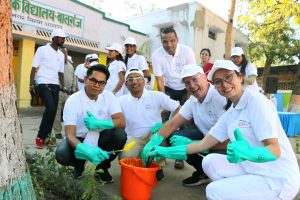
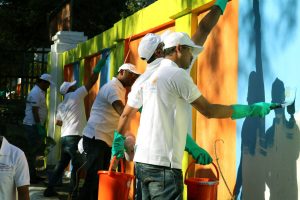
Presently, we have adopted five government schools located in the urban and rural slums of Agra. We collaborate with the schools to improve the infrastructure, improve teaching quality via training and workshops, collaborate with government authorities to introduce the mid-day meal scheme and provide resources such as books and teaching equipment.
We aim to transform such schools from dysfunctional systems into temples of learning and motivation, creating an environment where dreams can be born.
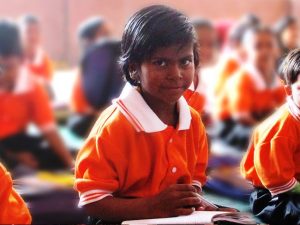 Are you planning to extend these programmes to other areas in North India or other regions?
Are you planning to extend these programmes to other areas in North India or other regions?
Yes, we have these plans. At present, our focus is to extend these programmes to the eastern cities of Uttar Pradesh since they are home to largely impoverished communities.
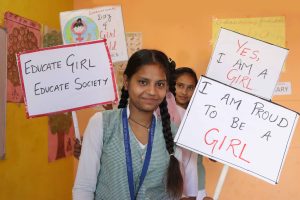 How do you sustain all these programmes since they require ample finances to keep them afloat?
How do you sustain all these programmes since they require ample finances to keep them afloat?
We are very fortunate that our NGO has credible recognition at the global level through our partnerships. We work with different stakeholders through individual, corporate and CSR 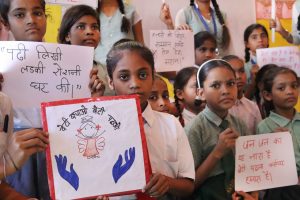 partnerships. Due to our consultative status with ECOSOC at the United Nations, there are several opportunities, apart from finance, to sustain programmes such as sharing sector knowledge, domain expertise and volunteering.
partnerships. Due to our consultative status with ECOSOC at the United Nations, there are several opportunities, apart from finance, to sustain programmes such as sharing sector knowledge, domain expertise and volunteering.
All these resources allow us to run our programmes smoothly. 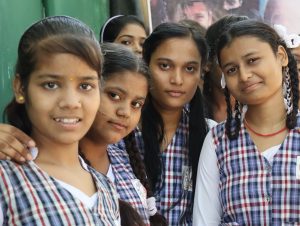 Our organisation is always open to partnerships and support via corporate CSR and grants for sustaining multi-year projects.
Our organisation is always open to partnerships and support via corporate CSR and grants for sustaining multi-year projects.
How have these different programmes impacted your life?
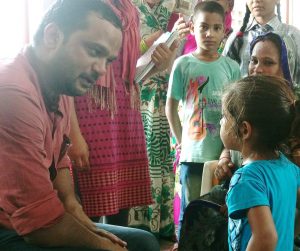 I have been involved in every aspect of the NGO for over a decade, and as we introduce more programmes, expand our reach to more rural communities and evolve our goals with time, the bottom line is this: children are really at the centre of it all. I have learnt so much since I founded IDF – the experience of working with different companies via CSR, through the volunteers that have worked with us in the past decade and through the partnerships I have developed with
I have been involved in every aspect of the NGO for over a decade, and as we introduce more programmes, expand our reach to more rural communities and evolve our goals with time, the bottom line is this: children are really at the centre of it all. I have learnt so much since I founded IDF – the experience of working with different companies via CSR, through the volunteers that have worked with us in the past decade and through the partnerships I have developed with 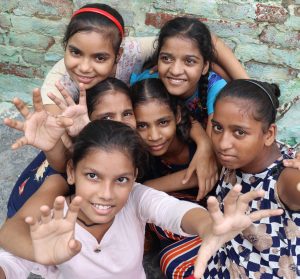 organisations like the ECOSOC, Google Ad Grants, Charities Aid Foundation, etc.
organisations like the ECOSOC, Google Ad Grants, Charities Aid Foundation, etc.
All the hard work and time invested in getting funds to expand the NGO to reach out and teach more kids and hear the dreams they have for their future, the people they want to become, and how they want to make a difference in the world, is all worthwhile.



